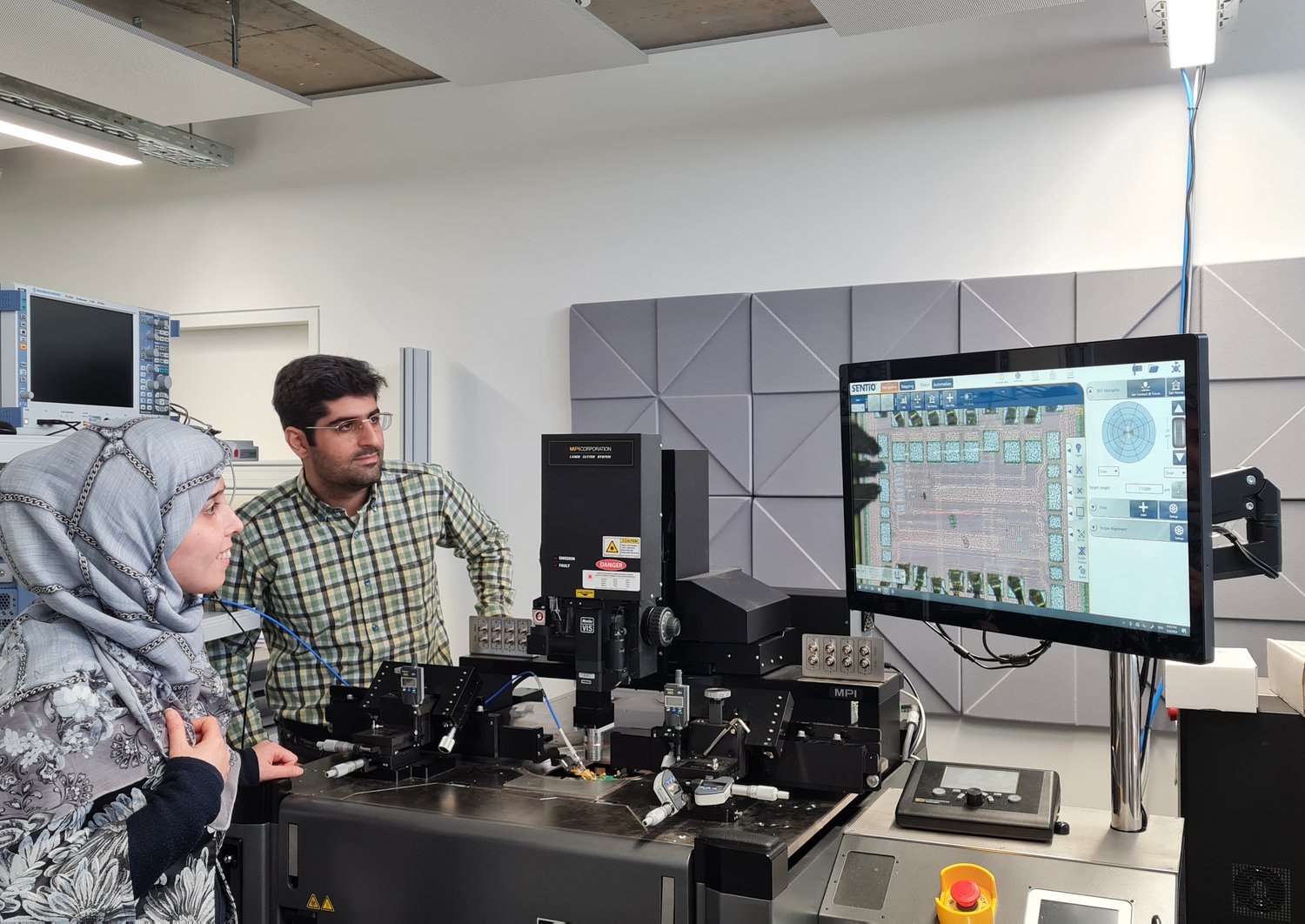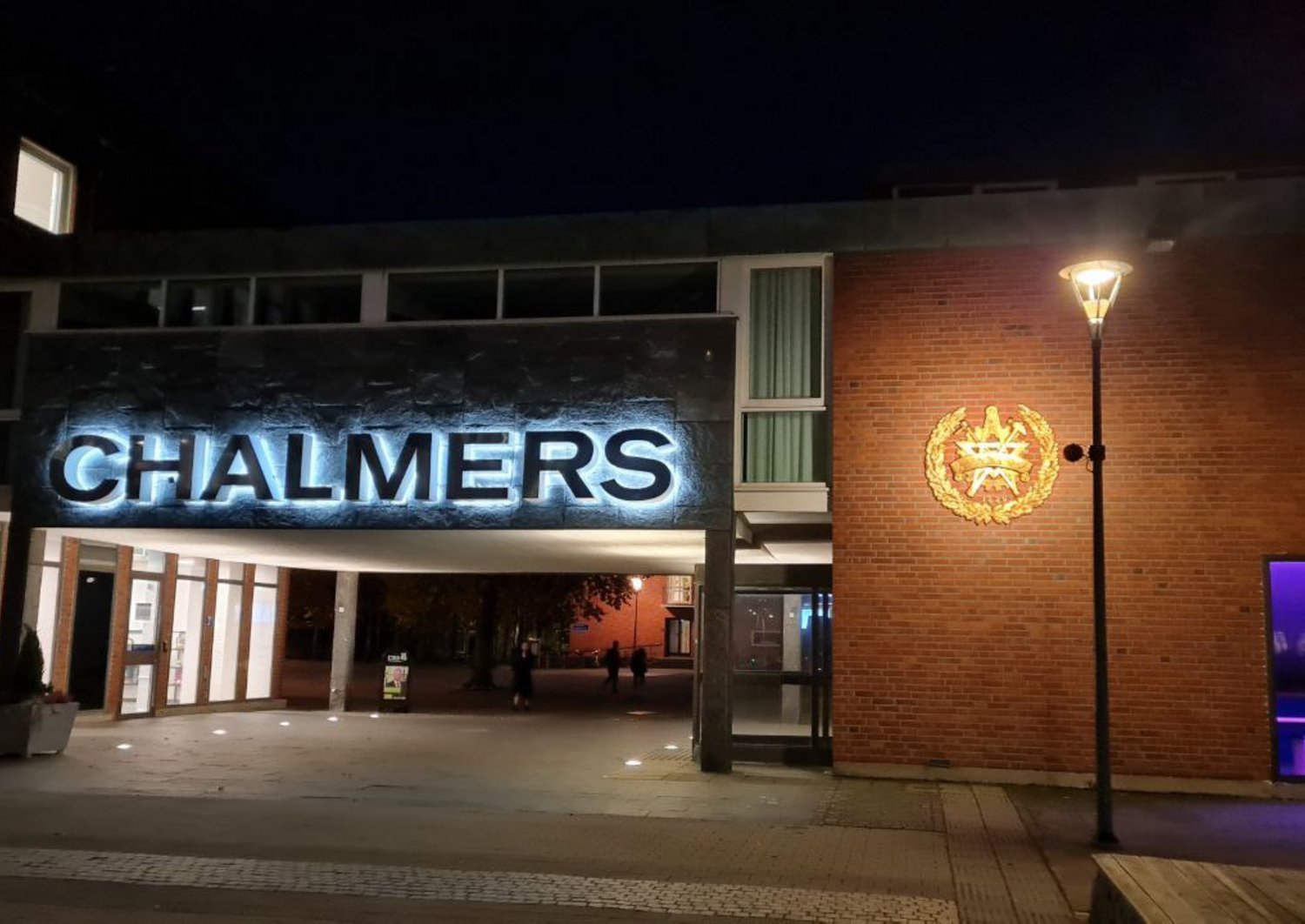Chalmers University is a renowned international university, ranking among the world’s top 100 leading universities in engineering and technology. Hamid and Fatemeh used the opportunity to complete a course on the Design of Monolithic Microwave Integrated Circuits (MMIC) while they were on site.
About Hamid and Fatemeh
Hamid is a PhD student at SAL where he is actively involved in All2GaN, an international project with more than 40 partners spanning both industry and academia across Europe. He is officially enrolled at Chalmers University of Technology in Gothenburg, Sweden, to finish his PhD.
“I picked Chalmers University of Technology for their incredible technical expertise which fits my research field really well. On my recent trip to Gothenburg, I not only got to know the university environment and my colleagues better, but I also met my supervisors, Professor Gregor Lasser and Professor Christian Fager, who are experts in Microwave Technologies. While I was on site, I also completed mandatory courses crucial for my academic advancement, such as a course on the design of monolithic microwave integrated circuits,” recounts Hamid.
Hamid was joined at Chalmers University by Fatemeh, a SAL Scientist and PhD student at Johannes Kepler University Linz, supervised by Professor Timm Ostermann. Her research primarily focuses on the design of receivers for 5G applications, and she has also contributed to the “Automation of Analog Circuit Design” project. Recently, she completed the design of a mixer-first receiver in CMOS technology. She is keen to explore various technologies and tools that can enhance her skills in the IC design field.
“The main purpose of my recent trip to Chalmers University was to participate in their MMIC course to become familiar with MMIC, gain experience working with new technologies and software, and to ultimately prepare the design for fabrication through the tape out process,” says Fatemeh.
Monolithic Microwave Integrated Circuits (MMIC)
Monolithic Microwave Integrated Circuits (MMIC) are advanced circuits crucial for wireless communication systems. They serve as the building blocks for components like amplifiers, oscillators and mixers. Improved MMIC designs enhance the performance of wireless communication systems and their components.
Hamid’s research at SAL focuses on the design of advanced circuits using the cutting-edge III/V technology of MMICs. He is investigating Gallium Nitride (GaN) Doherty power amplifiers, a technology crucial for 5G applications to enhance the power, efficiency, and performance of devices and circuits that enable faster and more reliable wireless communication. The applications of this research are widespread, benefiting industries such as telecommunications, aerospace, automotive, and more. At Chalmers, he completed the course on the design of MMICs by designing a Doherty power amplifier and taping it out in Gallium Arsenide (GaAs) technology, gaining valuable insights and hands-on experience with a new technology.
During the course, Fatemeh successfully designed a broadband MMIC low noise amplifier (LNA) in 180-nm GaAs technology. This is a significant achievement which not only complements her previous work, but also has the potential to be seamlessly integrated into the existing chip design as an external component. This development will contribute substantially to her PhD thesis, enhancing the overall scope and capabilities of her research in the field of IC design.
Looking ahead, Fatemeh's future goal involves integrating ICs fabricated in various technologies to create an array of receivers. This objective aligns with the critical demand in communication systems for the implementation of a phased array receiver. By combining expertise in different technologies and leveraging her research in IC design, Fatemeh aims to contribute to the development of advanced communication systems with enhanced capabilities through the realization of a phased array receiver. This forward-looking vision demonstrates her commitment to addressing significant challenges in the field and pushing the boundaries of innovation.







